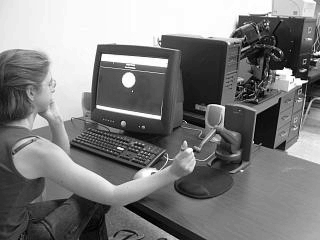VRML Plugin

Tool Summary
| General Purpose Information | |
|---|---|
| Year of First Releaseⓘ The year a tool was first publicly released or discussed in an academic paper. | 2003 |
| Platformⓘ The OS or software framework needed to run the tool. | Windows |
| Availabilityⓘ If the tool can be obtained by the public. | Unavailable |
| Licenseⓘ Tye type of license applied to the tool. | Unknown |
| Venueⓘ The venue(s) for publications. | IEEE Haptics Symposium |
| Intended Use Caseⓘ The primary purposes for which the tool was developed. | Haptic Augmentation |
| Hardware Control Information | |
|---|---|
| Haptic Categoryⓘ The general types of haptic output devices controlled by the tool. | Force Feedback |
| Hardware Abstractionⓘ How broad the type of hardware support is for a tool.
| Consumer |
| Device Namesⓘ The hardware supported by the tool. This may be incomplete. | Phantom |
| Body Positionⓘ Parts of the body where stimuli are felt, if the tool explicitly shows this. | N/A |
| Interaction and Interface Information | |
|---|---|
| Driving Featureⓘ If haptic content is controlled over time, by other actions, or both. | Action |
| Effect Localizationⓘ How the desired location of stimuli is mapped to the device.
| Target-centric |
| Media Supportⓘ Support for non-haptic media in the workspace, even if just to aid in manual synchronization. | Visual |
| Iterative Playbackⓘ If haptic effects can be played back from the tool to aid in the design process. | N/A |
| Design Approachesⓘ Broadly, the methods available to create a desired effect.
| Process |
| Interaction Metaphorsⓘ Common UI metaphors that define how a user interacts with a tool.
| N/A |
| Storageⓘ How data is stored for import/export or internally to the software. | VRML |
| Connectivityⓘ How the tool can be extended to support new data, devices, and software. | None |
Additional Information
This system is a Virtual Reality Modeling Language (VRML) plugin that adds force-feedback effects to a subset of VRML. This means that existing VRML scenes can automatically have haptic effects added to them. The scene can be explored using a PHANTOM device in the Netscape browser.
For more information about the VRML plugin, consult the 2003 Haptics Symposium paper.